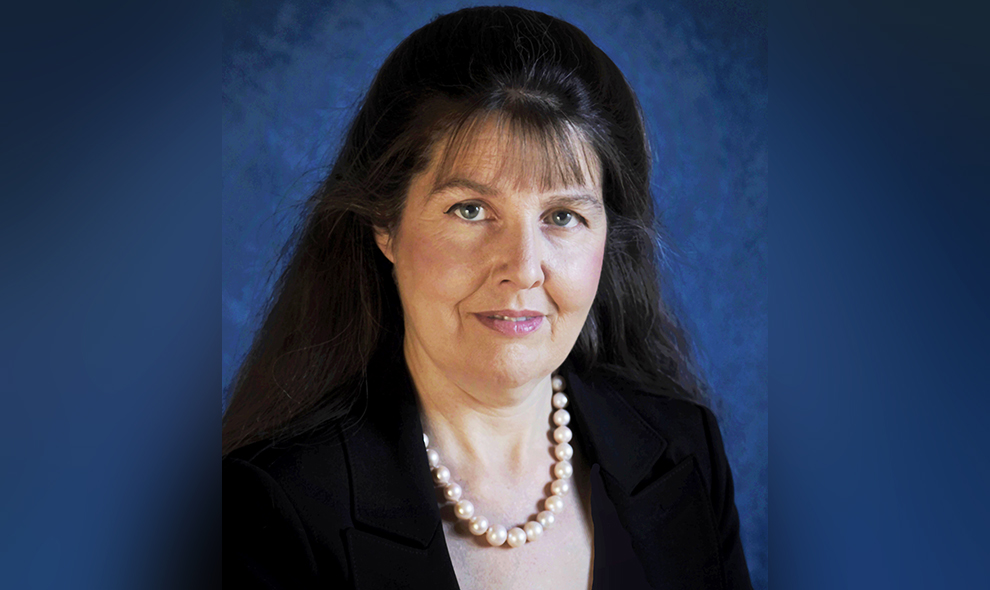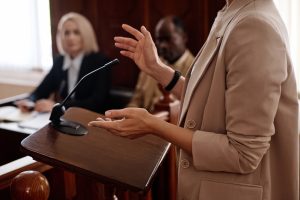In what ways can handwriting flip a case upside down?
I have worked on cases when the handwriting result was peripheral to the central argument of the case. Other times, providing handwriting authorship on a key document was critical to the case. In many probate cases when a signed Will is in contest, proving authorship of the signature is usually a key component in the case. Complications involving elder abuse, illness, dementia, and use of medications are all factors that often occur when litigating an estate involving a deceased elder. Health factors can seriously affect proving the authenticity of the signature and can be difficult to navigate especially without the assistance of a forensic handwriting expert.
When should lawyers consider seeking an expert like yourself to assist them with their case?
Lawyers should seek expert services any time there is a questioned or disputed document. There are many factors involved in altered and forged documents, and with the advances in technology, a skilful forger can make documents look near perfect. If there is any question about the document, I recommend consulting a document examiner. I have seen cases where the lawyer or the client try to perform their own evaluation without fully understanding the extent of the forgery or how it was created. Sometimes clients are perplexed why the signature looks like their own, but they know they didn’t sign the document. Other times, signatures may look “forged” or not show any similarity to comparison signatures, yet they are genuine. Complications associated with health and medications can make signatures look dissimilar to genuine signatures. Electronically captured signatures are highly complex cases and require the services sometimes of both a forensic handwriting expert and digital evidence expert. Forensic document and handwriting examiners are equipped with instrumentation to detect, analyse, and differentiate paper, print process, signatures, alterations, pen ink, security documents, and more.
Forgery charges are highly complex and sometimes difficult for a prosecutor to prove in court. How do you assist?
Forgery is a complex process to prove and frequently involves the services of a fraud or forensic accountant. Forensic document and handwriting experts examine physical evidence to prove alteration and/or simulation. Simulation is the more accurate term that forensic handwriting experts use to describe the process of imitating or copying another person’s signature or handwriting. Access to original documents and adequate comparative evidence is important in providing strong opinions regarding questioned documents. Medical, accounting and other bookkeeping records can be complex documents. If forgery is suspected, it is important to consult a document examiner to assist in detecting if and where the forgery occurred. A document examiner is experienced in examining a wide array of different types of documents and has special instrumentation to detect alterations or written forgeries that go undetected to the unaided eye. I have worked on complex document cases where suspected forgery occurred, but the attorney and the client could not figure out how the document was created. Document examiners can assist in helping to examine the evidence and prove forgery.
What are the common telltale signs that forgery has occurred?
Forgery is a legal term involving the intent to defraud. Forensic document and handwriting experts do not use the term as they examine and opine on material evidence. Evaluation of intent or motive is decided upon by the trier-of-fact, not the forensic document examiner. Forgeries can be the product of altered documents or simulated handwriting or signatures where a person imitates the writing of another. In altered documents, misalignments of text or margins within the document or “floating” signatures that do not interact with any other part of the document are signs that a document may be altered. To detect a replaced page in a multi-page document may involve examination of the paper, print process, folds and wear on the paper, and even staple marks. The simulation of a signature, especially one that is carefully imitated by another writer, may look visually similar, but it may also look drawn and unnatural. Habitually, people write very quickly and automatically, so a slowly written signature is one of the signs that a signature has been imitated or traced.
What is the analysis process usually like? What do you need in order to get a sound judgement by the end of your report?
Establishing the methodology of the examination is as important as conducting the examination itself. When contacting a document examiner, it is recommended that very few details about the case are shared with the expert to minimise bias going into the case. A document examiner only needs to be supplied with a test question or reason for analysis and examine the documents in question and comparative material. The background of the case is not necessary and is discouraged. Adequate comparison standards in handwriting examination cases are critical. In disputed signature cases, rarely can any type of opinion be formed with only one comparison signature. Typically, a larger number of comparison signatures are required including signatures written during a contemporaneous time period to the disputed signature. Sometimes, comparison signatures are not available which frequently occurs in criminal cases. In such cases, handwriting experts schedule appointments with suspects to obtain handwriting exemplars in person. It is recommended that handwriting experts collect the exemplars as they use a variety of tests to gather different types of handwriting samples from the suspect. In cases where there may be multiple suspects (personnel cases, anonymous notes), we recommend using a handwriting “line-up” process where the handwriting of suspects is sent to the examiner without disclosing who the suspect is to eliminate bias in the examination process.
How often is your final conclusion definite?
In a perfect world, document examiners would provide a definitive conclusion every time, but definite conclusions are frequently dependent on the quantity and quality of comparative evidence and availability of original documents. There are several factors involved in reaching such a conclusion. An important first step in any forensic analysis is the evaluation of the evidence. It is much easier to arrive at a definitive conclusion if a signature is complex and consistent, while evaluation of initials and careless signatures that amount to little more than a quick loop or other overly simplified written form rarely lead to any type of definitive conclusion. The quality of comparative evidence is vital. Comparing a disputed signature against a single comparison signature is not sufficient to yield any result other than no conclusion.
How has the digital era changed your line of work? Is it now more difficult to spot forgery?
A few years ago, I wrote a book titled “Developments in Handwriting and Signature Identification in the Digital Age” (Routledge, 2014). That book outlines the various changes that have occurred in handwriting and signatures as affected by the digital era. Some of those changes include the decrease in teaching cursive handwriting and how that has changed the way we write, especially among younger generations. The book also explores how digital tablets have advanced research into the neural processes involved in the handwriting process. I discuss electronic signatures—what they are, how they are generated, how they differ from wet ink signatures, and how handwriting experts need to analyse these unique and novel signatures. I created a methodology or best practice standard for the examination of e-signatures.
In some ways, it is more difficult to spot a forgery now because there are so many methods in which a document can be generated. The technology available to create documents is a little overwhelming when we compare the way documents were generated just 40 years ago. The wide-spread availability of printing has created an ever-increasing need for advanced security features in currency and identification documents. The accessibility to document imaging software allows ease in manufacturing and altering documents.
For further information about forensic document examination, I can be contacted at:
Heidi H. Harralson, MA, BCDE, Dipl.
Board Certified Document Examiner
Spectrum Forensic International, LLC
Phone: 520-975-2275
Email: harralson@spectrumforensic.com
Email: spectrum008@aol.com
I am Heidi Harralson, managing partner of Spectrum Forensic International, LLC, a full-time forensic handwriting and document examination practice. I am court-qualified and am a board-certified forensic document examiner and diplomate through the National Association of Document Examiners. Our firm, which includes two document examiners, works on cases throughout the United States and internationally. We work on a wide range of cases, both civil and criminal, and have been consulted by the prosecution and defense. Our casework is not limited to traditional questioned documents (which include the normal course of business documents such as medical records, probate documents, contracts, deeds, etc.), but we are also consulted on works of art and historical documents. Publishing, research, and education have been an important part of our professional experience. I have lectured extensively to professional organizations and universities on the handwriting sciences internationally and I am an affiliate professor at East Tennessee State University where I teach courses in forensics and especially in forensic document examination. I have published original research in peer-reviewed journals and authored course textbooks on forensics. I hold a Master of Arts in handwriting science and forensic document examination and a forensic crime scene technician certificate.
Publications include:
Huber & Headrick’s Handwriting Identification: Facts & Fundamentals, 2nd ed. (CRC Press, 2018)
Developments in Handwriting and Signature Identification in the Digital Age (Routledge, 2014, also translated and published in China and Italy)
Crime Scene Investigation (Anderson, 2013, co-authored chapter on document examination)
Forensic Handwriting Examination of Motor Disorders & Forgery (VDM Verlag, 2008)
A complete list of my publications can be found on ResearchGate: https://www.researchgate.net/profile/Heidi-Harralson





















